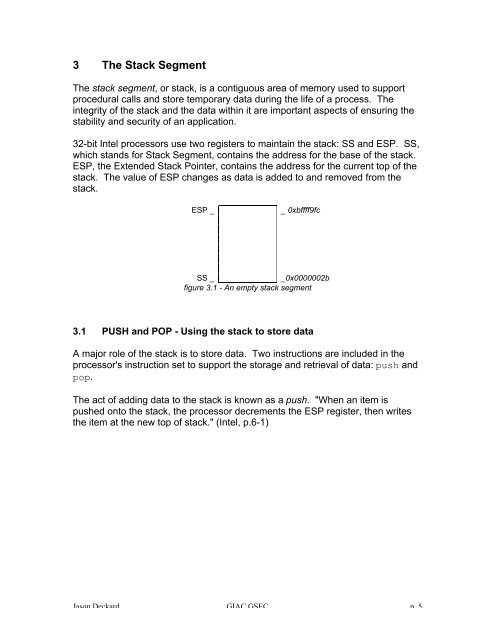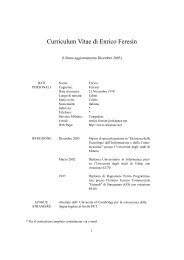Defeating Overflow Attacks - orkspace.net
Defeating Overflow Attacks - orkspace.net
Defeating Overflow Attacks - orkspace.net
You also want an ePaper? Increase the reach of your titles
YUMPU automatically turns print PDFs into web optimized ePapers that Google loves.
3 The Stack Segment<br />
The stack segment, or stack, is a contiguous area of memory used to support<br />
procedural calls and store temporary data during the life of a process. The<br />
integrity of the stack and the data within it are important aspects of ensuring the<br />
stability and security of an application.<br />
32-bit Intel processors use two registers to maintain the stack: SS and ESP. SS,<br />
which stands for Stack Segment, contains the address for the base of the stack.<br />
ESP, the Extended Stack Pointer, contains the address for the current top of the<br />
stack. The value of ESP changes as data is added to and removed from the<br />
stack.<br />
ESP _<br />
_ 0xbffff9fc<br />
SS _<br />
_0x0000002b<br />
figure 3.1 - An empty stack segment<br />
3.1 PUSH and POP - Using the stack to store data<br />
A major role of the stack is to store data. Two instructions are included in the<br />
processor's instruction set to support the storage and retrieval of data: push and<br />
pop.<br />
The act of adding data to the stack is known as a push. "When an item is<br />
pushed onto the stack, the processor decrements the ESP register, then writes<br />
the item at the new top of stack." (Intel, p.6-1)<br />
Jason Deckard GIAC GSEC p. 5






